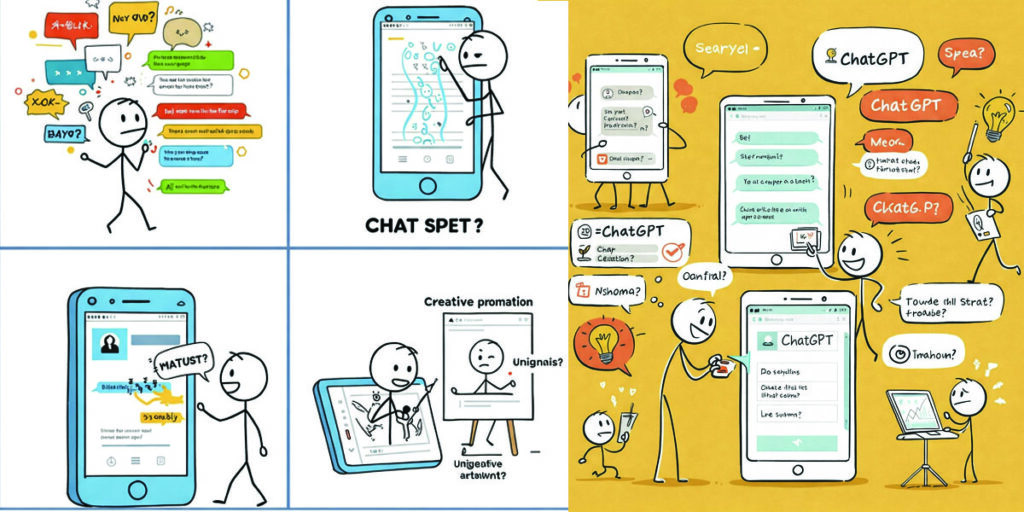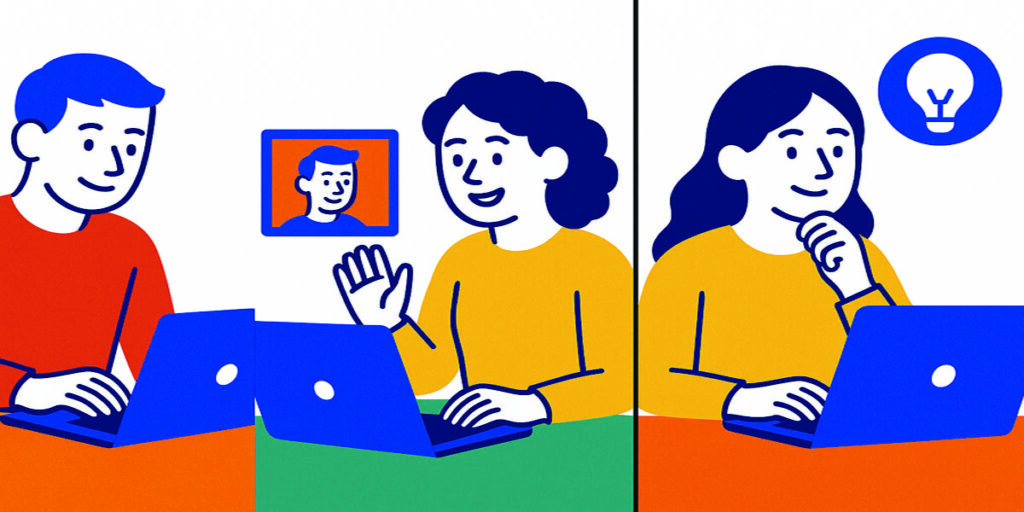AI video generator with human-like avatars and text-to-speech in multiple languages.
DeepBrain AI’s journey from a chatbot service to a leader in AI avatar and video generation technology is a compelling example of rapid innovation in the AI space. Its history is marked by a clear vision for humanizing digital interactions and a commitment to technological advancement. Economically, the company operates within a high-growth market driven by the insatiable demand for video content and the need for efficient, scalable, and personalized creation tools. DeepBrain AI’s SaaS business model and the tangible cost/time savings it offers position it favorably in this landscape. Furthermore, its extensive network of technology partnerships and diverse applications across numerous industries highlight its integrated role within the broader digital ecosystem. While challenges remain, particularly concerning realism and ethical use, DeepBrain AI’s ongoing innovation and strategic collaborations suggest a future where its AI-powered avatars and video generation technology will continue to play a significant role in shaping how we create, communicate, and interact in the digital age. The synthesized future is not just coming; companies like DeepBrain AI are actively building it, one human-like avatar and generated video at a time. Sources and related content
In the rapidly evolving landscape of artificial intelligence, the ability to create compelling, human-like digital interactions has moved from the realm of science fiction to tangible reality. At the forefront of this revolution stands DeepBrain AI, a company that has carved a significant niche in the creation of hyper-realistic AI-powered avatars and text-to-video generation. With its technology allowing for seamless conversion of text into engaging video content featuring human-like presenters in multiple languages, DeepBrain AI is not just developing cutting-edge technology; it’s actively shaping the future of content creation, communication, and digital interaction. This article explores the journey of DeepBrain AI, delving into its history, analyzing its economic footprint and the market it inhabits, and examining the intricate network of partnerships and applications that define its ecosystem.
From Conversational AI to Digital Humans: The History of DeepBrain AI
The genesis of DeepBrain AI can be traced back to 2016, when it was founded by Eric Seyoung Jang. Initially, the company focused on developing chatbot services, aiming to streamline and optimize business operations through conversational AI. This early phase laid the groundwork in natural language processing (NLP) and understanding human-computer interaction, skills that would become fundamental to their later innovations.
A pivotal moment in DeepBrain AI’s history arrived in 2018 with the development of an early prototype of their AI avatars. This marked a significant shift from purely text-based or voice-based interaction towards incorporating a visual, human-like element. The goal was to create digital entities that could not only understand and respond but also convey information with the visual cues and presence of a human presenter. Building on this, 2019 saw the integration of advanced voice synthesis capabilities, enabling their AI avatars to speak with natural-sounding voices in various languages.
Over the next few years, DeepBrain AI continued to refine its AI avatar technology, making significant advancements in realism, expressiveness, and lip-sync accuracy. The advent of large language models (LLMs) further accelerated their progress, allowing for more sophisticated language understanding and generation, which in turn enhanced the conversational abilities and script-to-video accuracy of their AI.
This period of intense technological development led to the launch of key products that define DeepBrain AI’s current offering. AI Studios, their flagship text-to-video platform, emerged as a tool enabling users to quickly generate professional-quality videos from scripts using AI avatars. Alongside this, AI Human was introduced, focusing on creating interactive, real-time conversational AI avatars capable of fulfilling roles such as virtual bankers, tutors, or customer service agents. The later introduction of features like Dream Avatar, allowing users to create personalized avatars from a single image and short voice recording, further democratized the creation of digital human representations.
DeepBrain AI’s growth has been supported by several funding rounds, including significant Series A and Series B investments, totaling around $52 million. These investments have fueled research and development, global expansion, and the scaling of their platform and services. Headquartered in Palo Alto, California, the company has expanded its reach, serving a diverse range of customers globally.
The historical trajectory of DeepBrain AI is a testament to the rapid advancements in AI, particularly in the fields of generative AI, NLP, and computer vision. By strategically evolving from chatbot services to sophisticated AI avatar and video generation, DeepBrain AI has positioned itself as a key player in the emerging synthetic media landscape.
Economic Landscape: Market Size, Drivers, and DeepBrain AI’s Position
DeepBrain AI operates within the dynamic and rapidly expanding market for AI video generators and digital humans. This market is a subset of the broader generative AI and synthetic media industries, driven by an increasing global demand for video content and the need for more efficient and scalable content creation methods.
Market size estimations for AI video generators vary across different reports, but they consistently point towards significant growth. Projections indicate a market size valued in the hundreds of millions of USD in 2024, with forecasts suggesting a rise to several billion USD by the early 2030s, exhibiting a compound annual growth rate (CAGR) typically ranging between 20% and 31%. This aggressive growth trajectory is fueled by several key factors:
- Explosion of Video Content Demand: Video has become the dominant medium for information consumption across social media, marketing, education, and corporate communication. Businesses and creators require vast amounts of video content, often personalized and localized, which traditional production methods struggle to deliver at scale and cost-effectively.
- Cost and Time Efficiency: Traditional video production involves significant costs related to actors, film crews, equipment, studio rentals, and post-production. AI video generators drastically reduce these costs and the time required to produce videos, making high-quality video creation accessible to a wider range of individuals and organizations, including small and medium-sized enterprises (SMEs).
- Advancements in AI Technology: Continuous improvements in deep learning, natural language processing, and computer vision are making AI-generated videos and avatars increasingly realistic and controllable. This technological maturity is boosting user adoption and expanding the potential applications of the technology.
- Personalization and Localization: AI video generators enable the easy creation of personalized videos for targeted marketing or communication. They also facilitate the localization of content by quickly generating videos with avatars speaking different languages, opening up global markets.
- Rise of Remote Work and Digital Communication: The shift towards remote and hybrid work models has increased the reliance on digital communication tools. AI avatars can serve as engaging presenters for virtual meetings, training modules, and internal communications.
The competitive landscape includes a range of players, from startups specializing in AI video and avatars to larger tech companies integrating generative AI into their platforms. DeepBrain AI is recognized as a prominent competitor alongside companies like Synthesia, Pictory, Runway ML, Lumen5, InVideo, and others. DeepBrain AI differentiates itself through its focus on hyper-realism in avatars, the breadth of languages supported by its text-to-speech, and the intuitiveness of its AI Studios platform designed for ease of use.
DeepBrain AI’s business model is primarily Software as a Service (SaaS). This subscription-based model provides users with access to their cloud-based platform and tools, offering scalability and flexibility. SaaS models are attractive to businesses as they reduce upfront costs and provide ongoing access to updates and new features. The pricing structure likely varies based on usage, features, and the level of customization required (e.g., custom avatars).
Economically, DeepBrain AI’s technology delivers significant value propositions to its users. For businesses, this translates into:
- Reduced Production Costs: Eliminating the need for traditional video production resources leads to substantial cost savings.
- Faster Content Creation: Videos that would take days or weeks to produce traditionally can be generated in minutes using AI Studios.
- Increased Scalability: The ability to produce a high volume of videos quickly allows businesses to scale their content marketing, training, or communication efforts effectively.
- Enhanced Personalization: Creating tailored video content for specific audiences or individuals becomes feasible and cost-efficient.
- Improved Global Reach: Easy localization through multilingual text-to-speech and diverse avatars allows companies to connect with global audiences more effectively.
Beyond direct cost savings, DeepBrain AI’s technology enables new forms of economic activity. AI Humans can serve as virtual employees, providing round-the-clock services in areas like customer support or information delivery, potentially augmenting or transforming human roles. The ability to quickly generate explanatory or marketing videos can lead to improved customer engagement and conversion rates.
However, the growth of this market also presents economic considerations related to job displacement in traditional video production roles and the need for new skills in working with AI tools. Ethical considerations regarding the use of realistic avatars and the potential for misuse (e.g., deepfakes) are also part of the economic and societal dialogue surrounding this technology. DeepBrain AI has shown awareness of this by developing deepfake detection technology in collaboration with law enforcement.
The Networked Ecosystem: Partnerships, Collaborations, and Applications
DeepBrain AI’s success and reach are significantly amplified by its strategic networking and collaborations within the technology industry and across various sectors. These partnerships provide access to advanced infrastructure, co-development opportunities, and broader market penetration.
Key technology partnerships include collaborations with major cloud providers and hardware manufacturers:
- AWS (Amazon Web Services): DeepBrain AI leverages AWS services like Amazon Elastic Kubernetes Service (EKS) for managing containerized workloads, Amazon Elastic File System (EFS) for storage of large data volumes (images, AI models), and AWS DataSync for secure data transfer. This partnership provides the scalable and robust cloud infrastructure necessary to train complex AI models and deliver their SaaS platform globally.
- Microsoft: DeepBrain AI utilizes Microsoft Azure services, including Azure OpenAI Service for leveraging large language models and Azure Cognitive Services for speech capabilities. This collaboration enhances their AI models’ understanding, generation, and multilingual abilities, contributing to more natural and intelligent avatar interactions.
- NVIDIA: As a company heavily reliant on deep learning and GPU acceleration for training and running its AI models, a partnership with NVIDIA is crucial. DeepBrain AI is part of the NVIDIA Inception Premier Showcase, indicating access to NVIDIA’s cutting-edge GPU technology and developer resources, essential for the performance and realism of their AI avatars and video generation.
- Intel: DeepBrain AI has also partnered with Intel, suggesting collaborations related to optimizing their AI models for Intel’s hardware, potentially expanding their deployment options and reach within Intel’s ecosystem.
- Lenovo: The partnership with Lenovo is notable, particularly in the context of assistive technology. Their collaboration on the ‘AI Avatar Project’ with the Scott Morgan Foundation to create an AI avatar for an individual with ALS demonstrates the application of DeepBrain AI’s technology for social good and its integration into broader technological ecosystems focused on accessibility.
- KT (Korea Telecom): Collaborations with telecommunications companies like KT can lead to the integration of DeepBrain AI’s solutions into customer service platforms, virtual assistants, or other telecommunications-related applications, expanding their reach within the telecom sector.
Beyond technology providers, DeepBrain AI engages in strategic collaborations and serves a diverse customer base across numerous industries, showcasing the versatility and broad applicability of its technology. These applications highlight the networking effect of their platform, enabling new forms of communication and content creation within various sectors:
- Media and Entertainment: AI Studios is used for automating news reporting with AI news anchors, creating engaging social media content, and potentially for generating virtual hosts or characters for other forms of media. The ability to quickly produce localized news content with AI anchors speaking different languages is a significant application.
- Corporate Training and Education: AI avatar instructors can deliver training modules, onboarding materials, and educational content. The partnership with Incheon National University to create an “AI Professor” demonstrates the potential for AI avatars to augment or provide educational instruction, offering personalized learning experiences and freeing up human educators’ time.
- Customer Service and Retail: AI Humans can serve as virtual assistants, providing information, answering queries, and guiding customers in retail environments (e.g., AI kiosks at Hyundai Premium Outlets) or within banking applications (e.g., AI bankers at KB Kookmin Bank, NH Nonghyup Bank, Hana Bank). This enables 24/7 customer support and frees up human staff for more complex interactions.
- Finance and Investment: AI Humans can explain financial products (e.g., at Eugene Investment & Securities), provide investment insights (e.g., Hana Bank app), or act as virtual advisors, making complex financial information more accessible and engaging for customers.
- Marketing and Advertising: Businesses can create personalized marketing videos, product demos, and advertisements quickly and at scale using AI Studios. The ability to feature realistic avatars can enhance brand engagement and memorability. Examples include applications in advertising for Gallery K and for promoting health food products.
- Public Sector and Government: Applications include creating informative videos for government websites, deploying AI Kiosks for public services (e.g., Gyeongbuk Government’s “AI Governor” initiative, AI Kiosks with Mayor Oh Se-hoon), and even supporting political campaigns with AI-generated content (e.g., Yoon Seok-yeol’s presidential campaign). Their collaboration with the Korean National Police Agency on deepfake detection is a crucial application for maintaining digital trust and combating misinformation.
- Healthcare: While not as explicitly detailed in the snippets, the potential for AI avatars in healthcare includes providing patient information, delivering training for medical professionals, or acting as empathetic virtual companions. Roche is mentioned as leveraging AI innovation, potentially including avatar technology for patient care or accessibility.
- Telecommunications: Integration with telecom services can lead to AI-powered customer service agents or virtual assistants within mobile apps or other platforms (e.g., SK Telecom’s “AI Kyung-ju Choi”).
This diverse range of applications demonstrates how DeepBrain AI’s technology is being integrated into the operational and communication strategies of organizations across various sectors. These deployments form a network of adoption and use cases that validate the technology’s value and provide feedback for further development.
The networking extends beyond formal partnerships and customer relationships to participation in industry events like CES, where DeepBrain AI has been a regular exhibitor, showcasing their latest innovations and connecting with potential partners and customers globally. Such events are crucial for demonstrating capabilities, building brand awareness, and fostering new connections within the tech and business communities.
Challenges and the Future
Despite its impressive growth and technological advancements, DeepBrain AI, like the broader synthetic media industry, faces challenges. These include:
- Maintaining Realism and Reducing the “Uncanny Valley”: While AI avatars are becoming increasingly realistic, subtle imperfections in movement, expression, or voice can still trigger the “uncanny valley” effect, where the near-human resemblance is unsettling to viewers. Continued research and development are needed to overcome this.
- Addressing Ethical Considerations and Misinformation: The potential for deepfakes and the spread of misinformation using realistic AI-generated content is a significant concern. DeepBrain AI’s development of deepfake detection technology is a positive step, but ongoing efforts are needed to ensure responsible use of the technology and to develop robust safeguards.
- Data Privacy and Security: The creation of custom avatars and the processing of scripts involve handling sensitive data. Ensuring robust data privacy and security measures is crucial for building user trust.
- Competition: The market is competitive, with both established players and new startups vying for market share. DeepBrain AI needs to continue innovating and differentiating its offerings to maintain its position.
- Educating the Market: While awareness of AI video generation is growing, educating potential users across diverse industries about the capabilities, benefits, and responsible use of the technology is essential for broader adoption.
Looking ahead, the future of DeepBrain AI and the AI avatar market appears promising. Continued advancements in AI are likely to lead to even more realistic and interactive avatars. The integration of AI avatars with other emerging technologies like the metaverse and advanced virtual reality could open up entirely new applications and markets. Personalized and dynamic video content is expected to become even more prevalent, further driving demand for efficient generation tools.
DeepBrain AI is well-positioned to capitalize on these trends, given its foundational technology, established products like AI Studios and AI Human, and its growing network of partnerships and customer base. The company’s focus on both content creation and real-time interaction with AI avatars suggests a future where digital humans play an increasingly integrated role in our online and potentially offline experiences, from customer service and education to entertainment and personal communication.




















